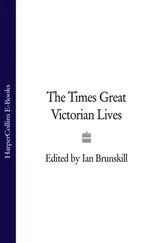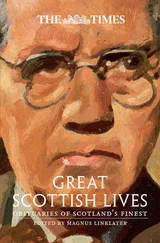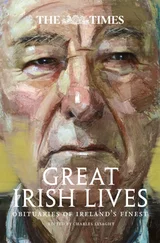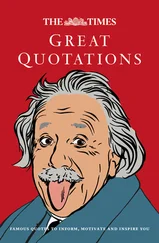The Social Democrats argued vehemently and incessantly, but this did not prevent them from agitating, organizing, and conspiring in Russia. While the rival party, the Socialist Revolutionaries, agitated among the peasantry and planned and carried out a series of terrorist acts, of which several Ministers, Governors, and the Grand Duke Serge were the victims, the Social Democrats developed their propaganda among the factory workmen, with but slight success until 1906, when the discontent caused by the Japanese War and the shooting of workmen in St Petersburg on Red Sunday, January 22, provoked an openly revolutionary movement throughout Russia. The movement culminated in the granting of a Constitution on October 30, 1905. During the months immediately preceding and following this event the Socialist agitation was at its height. Then, for the first time, the masses of the Russian people became acquainted with Socialist principles, and the agitators gained experience in dealing with the masses.
Propaganda at Work
Lenin’s name was not prominent during the first Revolution. He was very active behind the scenes, organizing, directing, pushing things in his own direction, noting the readiness of the masses to respond to extreme and demoralizing watchwords, sneering at all hints of compromise, at every stage forcing a disruption between the Social Democrats and the bourgeois parties. It is curious that he refused to become a member of the first short-lived St Petersburg Council of Workmen’s Deputies, formed after the promulgation of the Constitution. Trotsky played a prominent part in this Soviet. It is characteristic of Lenin that he only adopted the Soviet idea at the moment – 12 years later – when it suited his own purposes.
From 1905 to 1907 Lenin lived in Russia under an assumed name, endeavouring to keep alive and to organize the revolutionary movement, which, in the end, the Stolypin Government ruthlessly suppressed. His name is connected with several cases of ‘expropriation’. Apparently he did not personally organize these armed raids on banks and post-offices, but considerable sums seized in such robberies were handed over to the Bolshevists and used by Lenin to develop his propaganda at home and abroad. He left Russia when the collapse of the 1905 Revolution became apparent and resumed his activities in Geneva. On the whole his position among the revolutionaries had been greatly strengthened and among the mixed crowd of new exiles who had been thrown out of Russia by the failure of the first revolutionary offensive he found many instruments suitable for his unscrupulous purpose.
In 1912 he moved to Cracow so as to be in closer touch with his agents in Russia. A singular episode, characteristic of his contempt for bourgeois morality, was his intrigue, in collusion with the Secret Police, to split the small Social Democratic Party in the Duma through a certain Malinovsky, who visited him in Cracow with the knowledge of the Head of the Department of Police.
In 1914, at the outbreak of war, Lenin was in Galicia. As a Russian subject he was arrested by the Austrian authorities, but he was released when it was discovered that he would be a useful agent in the task of weakening Russia. He returned to Switzerland, where he carried on defeatist propaganda with the object of transforming the war between the nations into a revolutionary civil war within each nation. He was joined by defeatist Socialists from various countries. The funds for these operations were perhaps provided by Germany, since the sums Lenin had received from expropriations during the first revolution were exhausted. The activities of this little group of Socialists were hardly noticed amid the great events of the war. The conferences of Zimmerwald and Kienthal in 1915 had the appearance of insignificant gatherings of crazy fanatics. Yet they drafted the defeatist revolutionary programme and framed the watchwords which later acquired enormous power in Russia and influenced the working classes throughout Europe. Lenin regarded the vicissitudes of the war purely from the standpoint of revolutionary tactics. He noted the lessons of war, industry, and State-control, and the effects of war on mass-psychology.
The Revolution of 1917
The revolution that suddenly broke out in Russia in March, 1917, gave Lenin his long-sought-for opportunity. The Provisional Government formed after the abdication of the Emperor Nicholas proclaimed unrestricted liberty and encouraged the return of the political exiles, who came flocking back in thousands. There was some difference of opinion in the Government about permitting the return of such a notorious defeatist as Lenin. He came nevertheless, transported through Germany with the help of the German General Staff. Ludendorff considered that he was likely to be a most effective agent in disorganizing the Russian Army, and wrecking the Russian front. In this he was not mistaken; what he did not foresee was that Lenin would provoke a violent revolutionary movement that was later to react on Germany herself.
Lenin was received in Petrograd with all revolutionary honours. Searchlights from armoured cars lighted up the Finland railway station, which was thronged with people. Socialists of all parties made speeches, but Lenin was not to be led away by any external success. He wanted real power. On April 14, the day after his arrival, he laid his programme before the Social Democratic Conference, a programme which six months afterwards he carried out to the letter in his decrees. At the time his speech was ridiculed by the moderate Socialists. Only a small group of Bolshevists applauded their leader when he declared that peace with the Germans must be concluded, at once, a Soviet Republic founded, the banks closed, that all power must be given to the workers, and that the Social-Democrats must henceforth call themselves Communists. His motion was rejected by 115 to 20.
Lenin had at his back a compact organization well equipped with money. The Bolshevists displayed extraordinary activity in demoralizing the Army and the workmen and in provoking riots among the peasantry. There was no power to restrain them. In Petrograd, Lenin took up his quarters in the house of the dancer Kaszesinska, and from the balcony addressed large crowds day after day. In July he attempted a coup d’état, but failed. He went into hiding, but continued to direct subversive movement. The Provisional Government under Kerensky shrank from coercive measures. The Socialist Revolutionaries and Social-Democrats who controlled the Petrograd Soviet partly sympathized with the Bolshevists, partly feared them, but in their appeals to the masses they were always outbid by Lenin’s followers, and speedily they lost ground.
After the failure of Korniloff’s attempt in August to re-establish law and order the general demoralization increased. The Army went to pieces and, taking advantage of this disorganized host of armed men, to whom he promised immediate peace, Lenin effected a coup d’état on November 7, 1917, this time without any difficulty. Lenin appeared with his followers in a Congress of Soviets, and was acclaimed as Dictator. The members of the Provisional Government were imprisoned, all but Kerensky, who escaped. There was a sharp struggle in Moscow, where for several days boys from officers’ training schools defended the Kremlin, but they finally succumbed.
Master of the Terror
Lenin took up his residence in the Kremlin, and from that ancient citadel of autocracy and orthodoxy launched his propaganda, of world-revolution. Outwardly he lived as modestly as when he had been an obscure political refugee. Both he and his wife – he had married late in the ’nineties Nadiezhda Krupskaya – had the scorn of sectarians for bourgeois inventions and comforts. Short and sturdy, with a bald head, small beard, and keen, bright, deep-set eyes, Lenin looked like a small tradesman. When he spoke at meetings his ill-fitting suit, his crooked tie, his generally nondescript appearance, disposed the crowd in his favour. ‘He is not one of the gentle-folk,’ they would say, ‘he is one of us.’
Читать дальше












